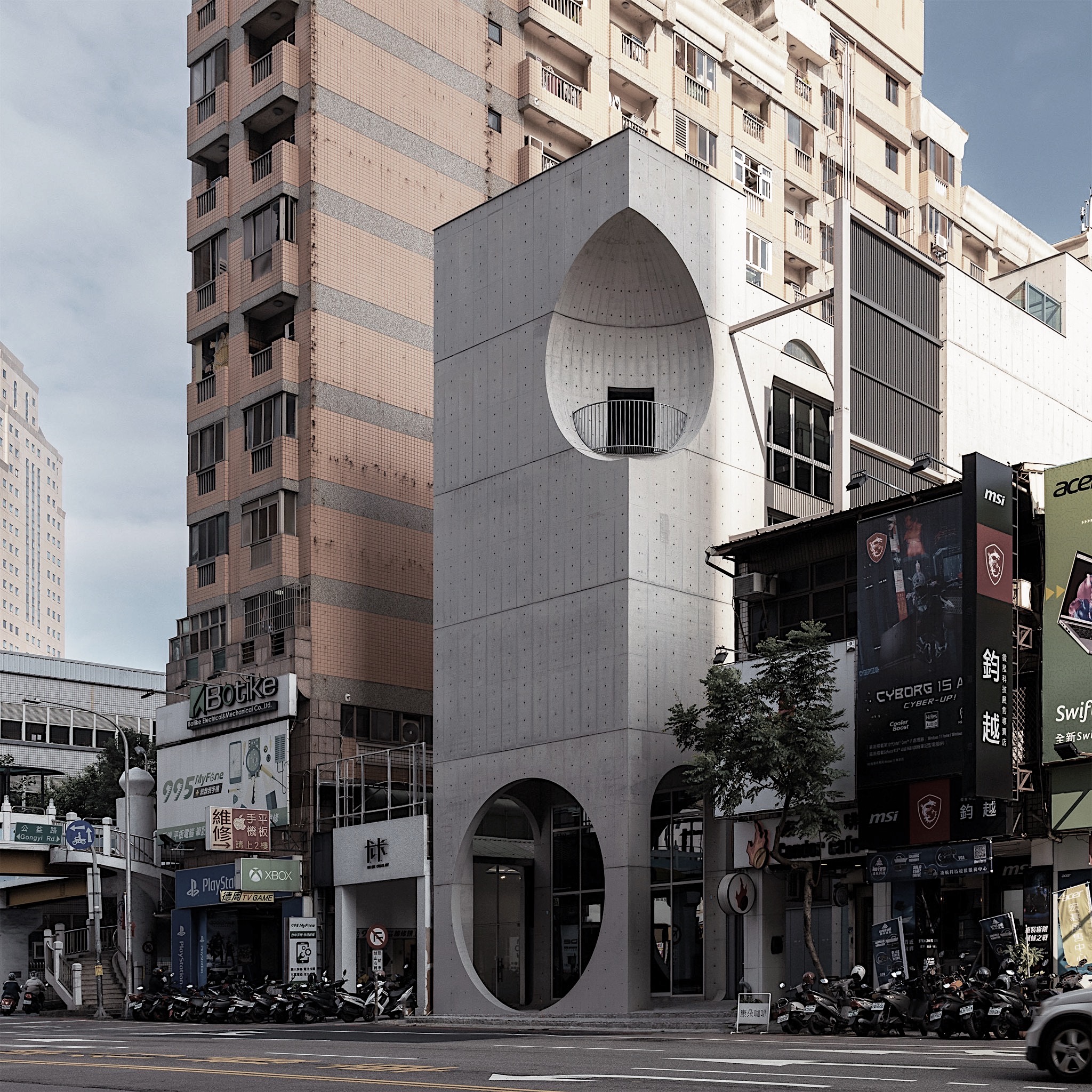
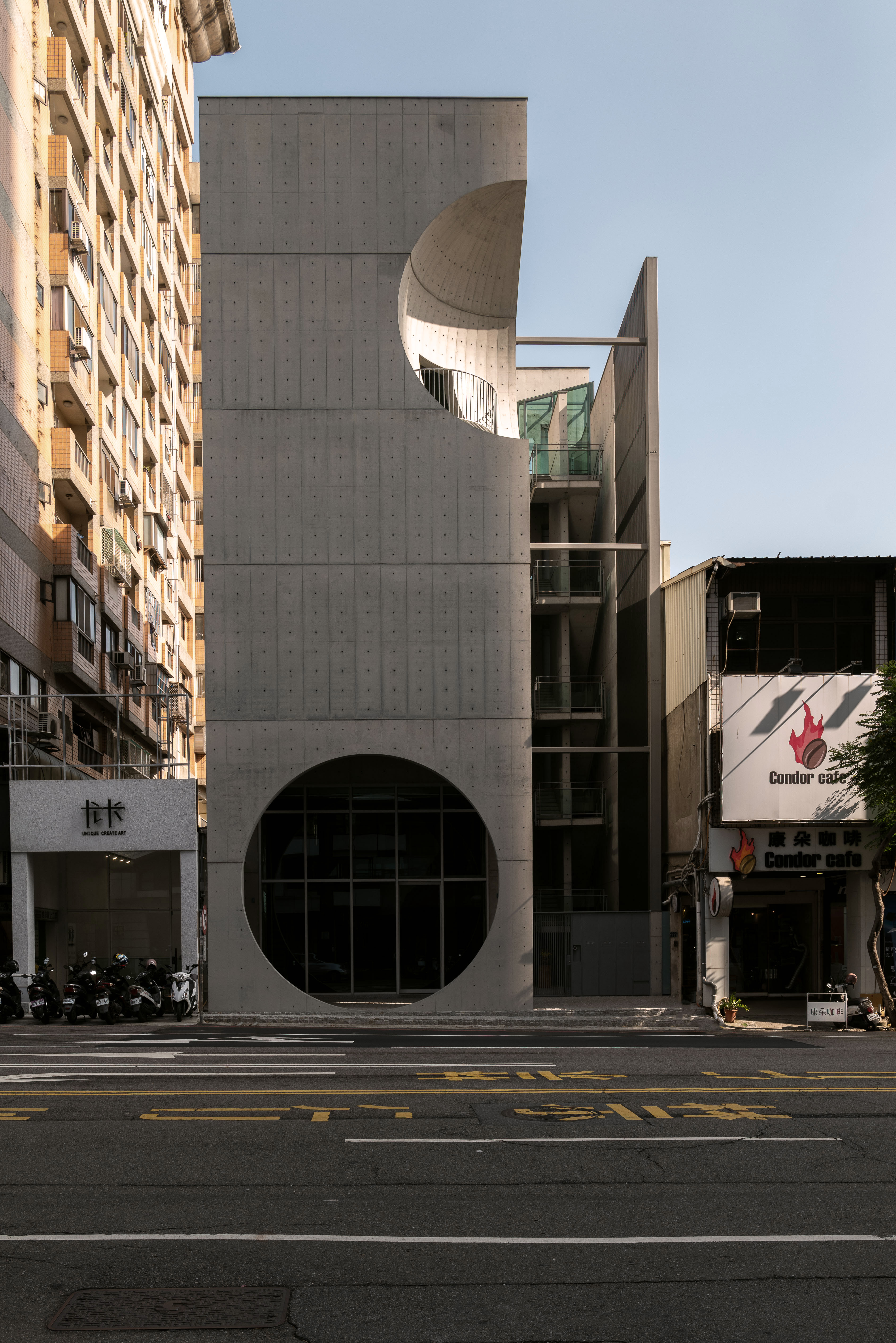
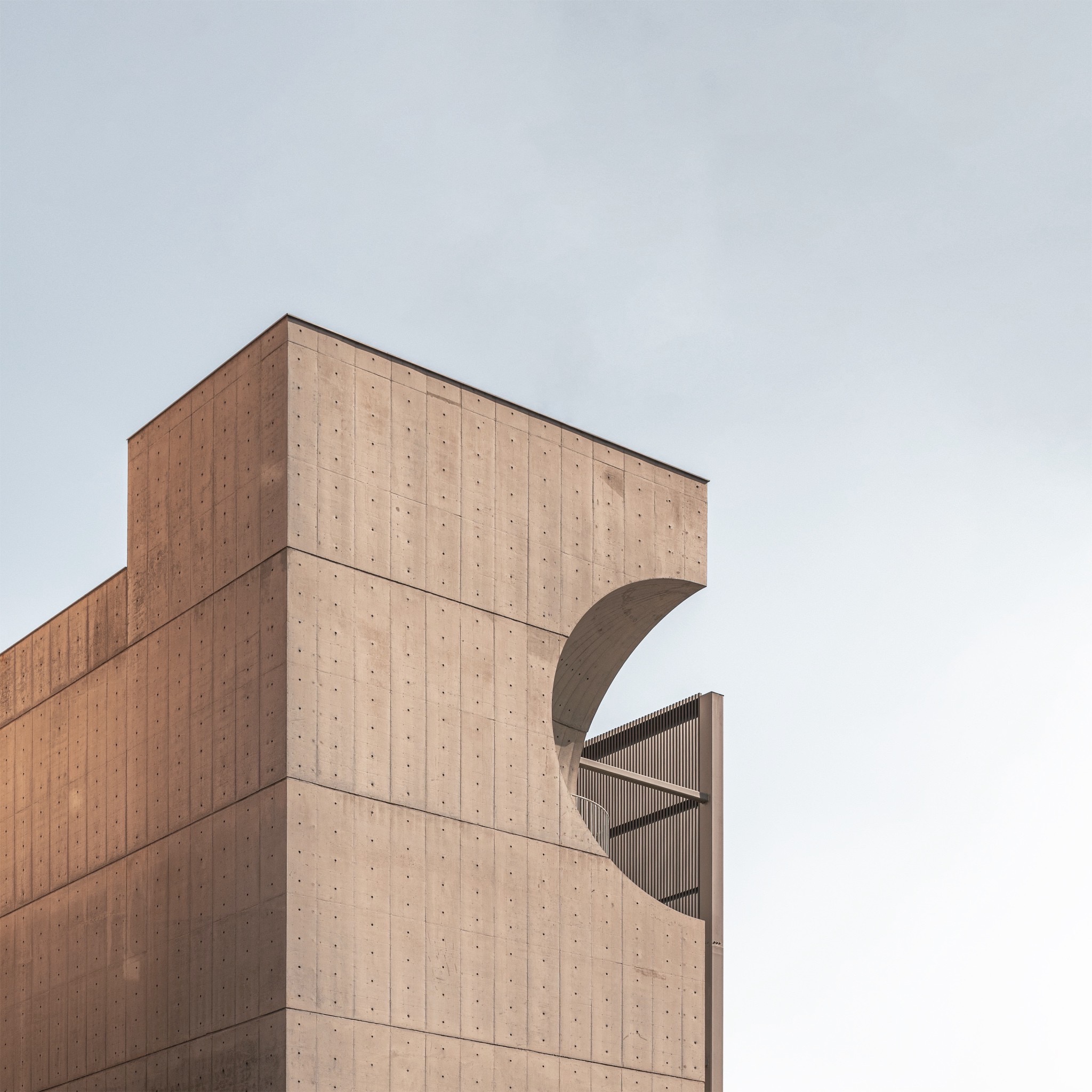
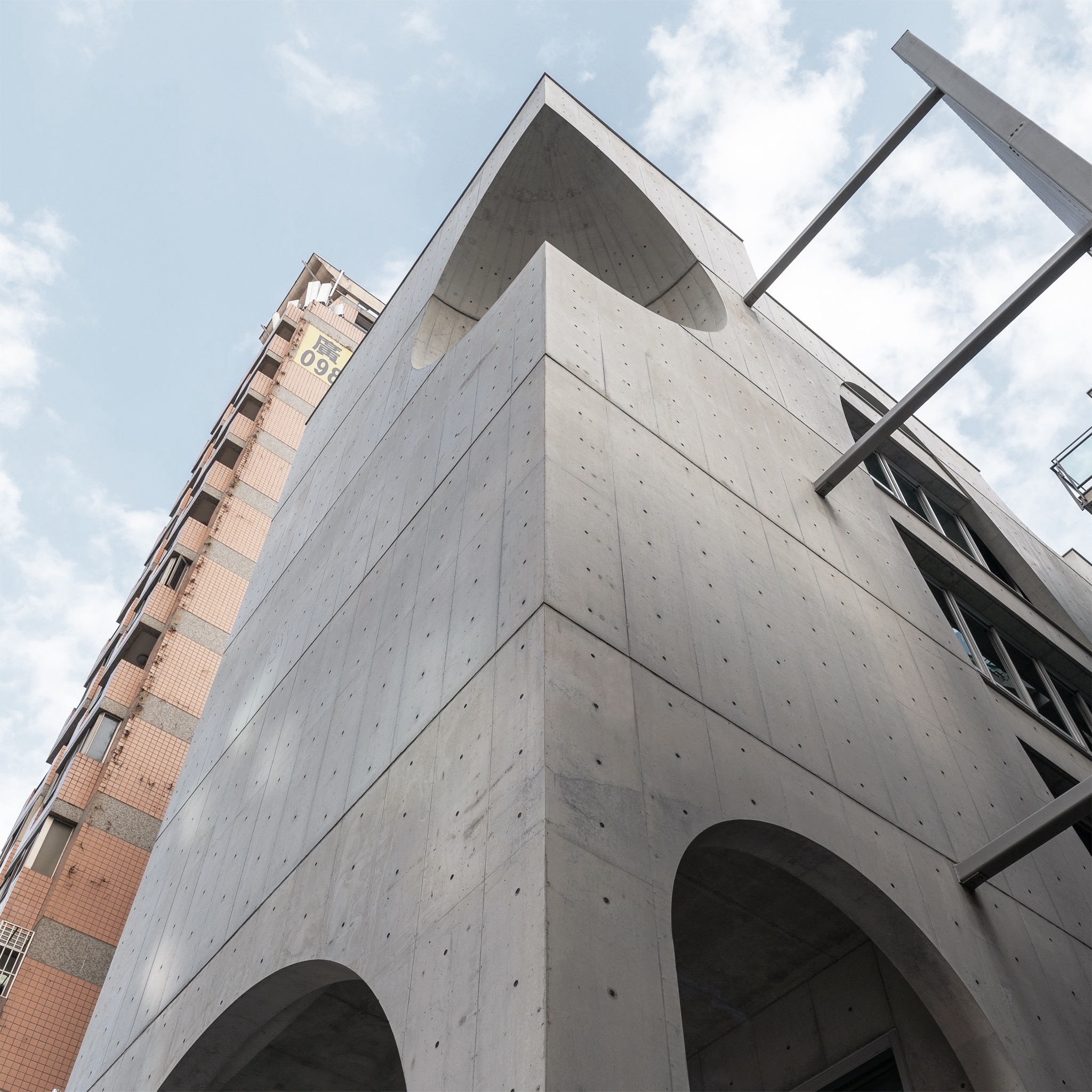
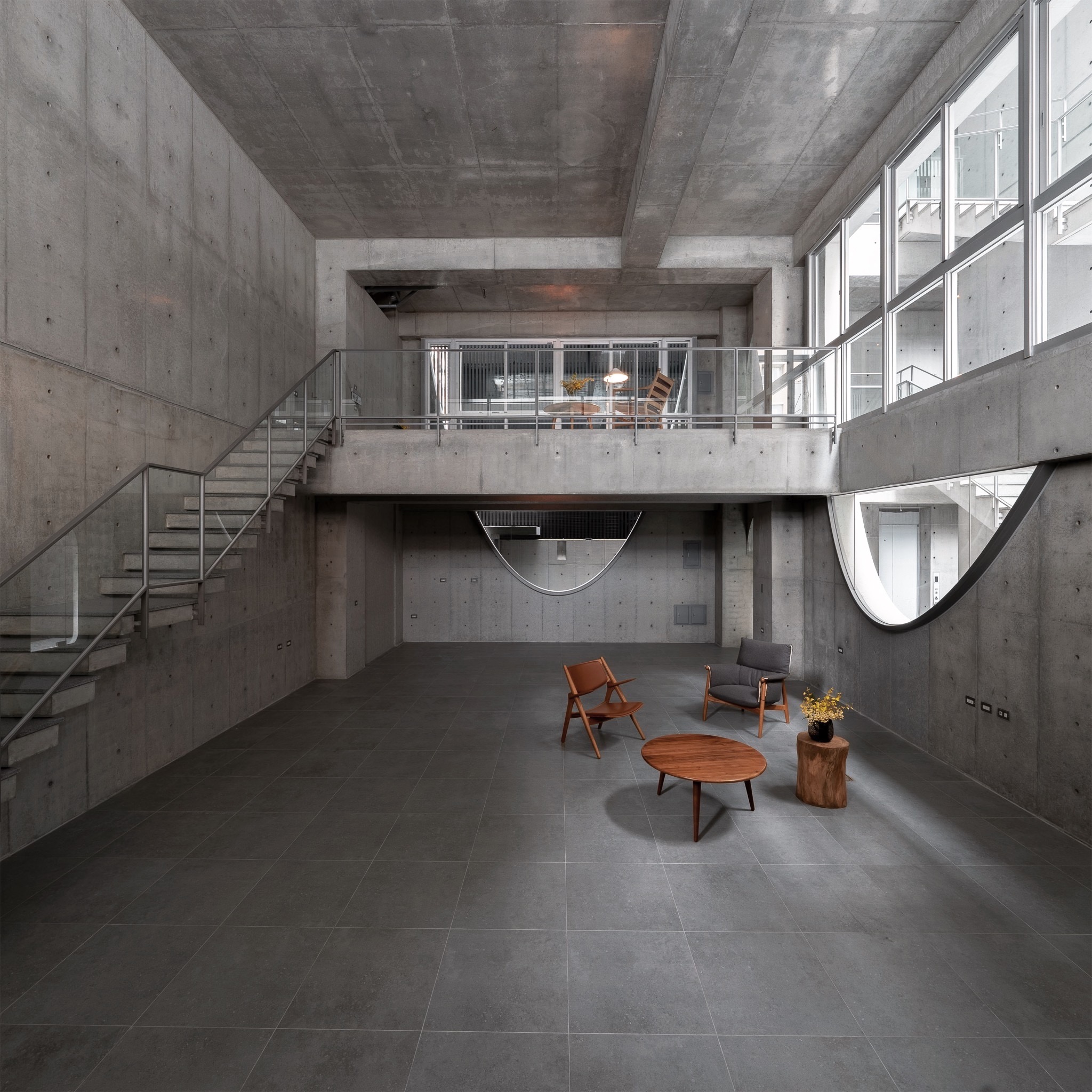
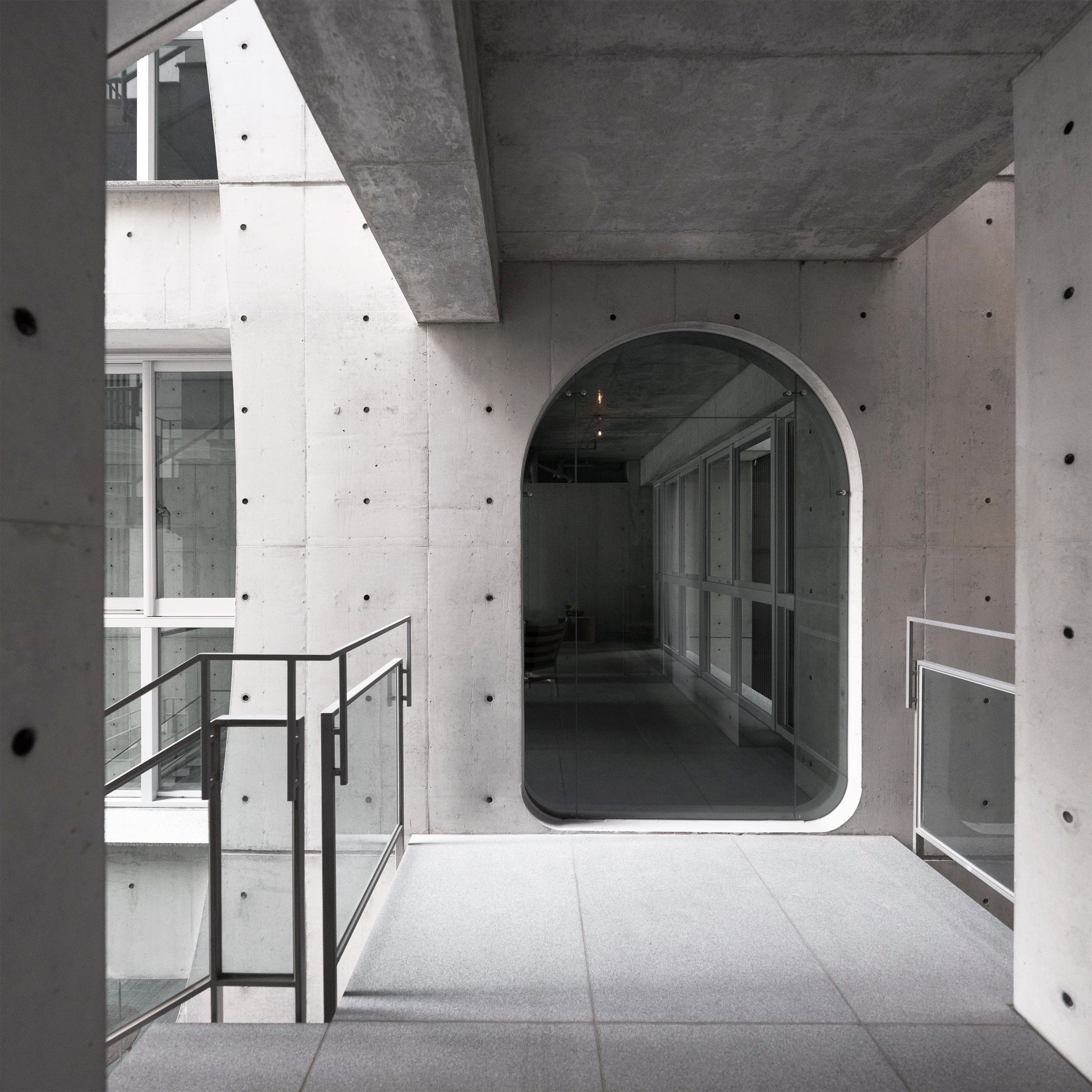
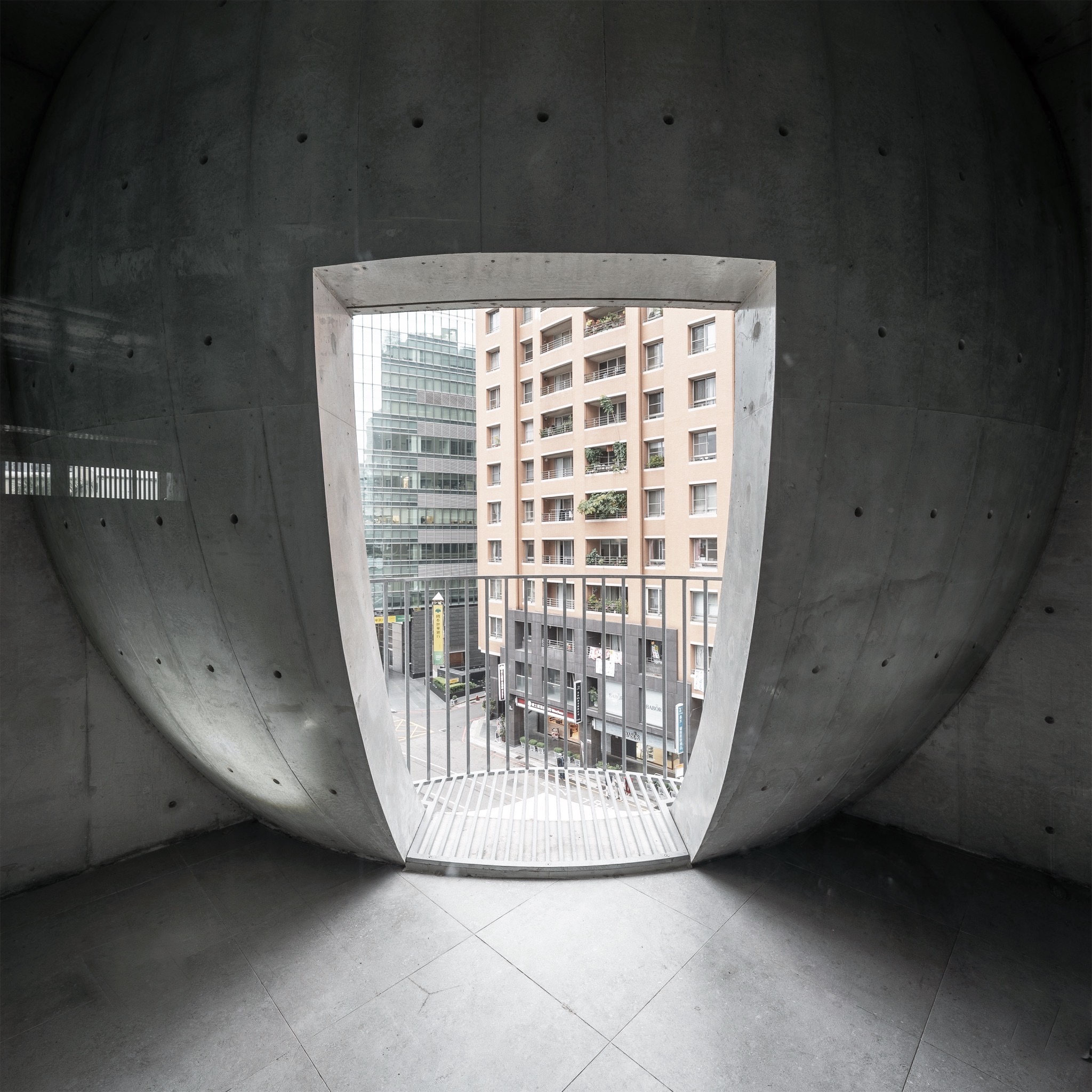
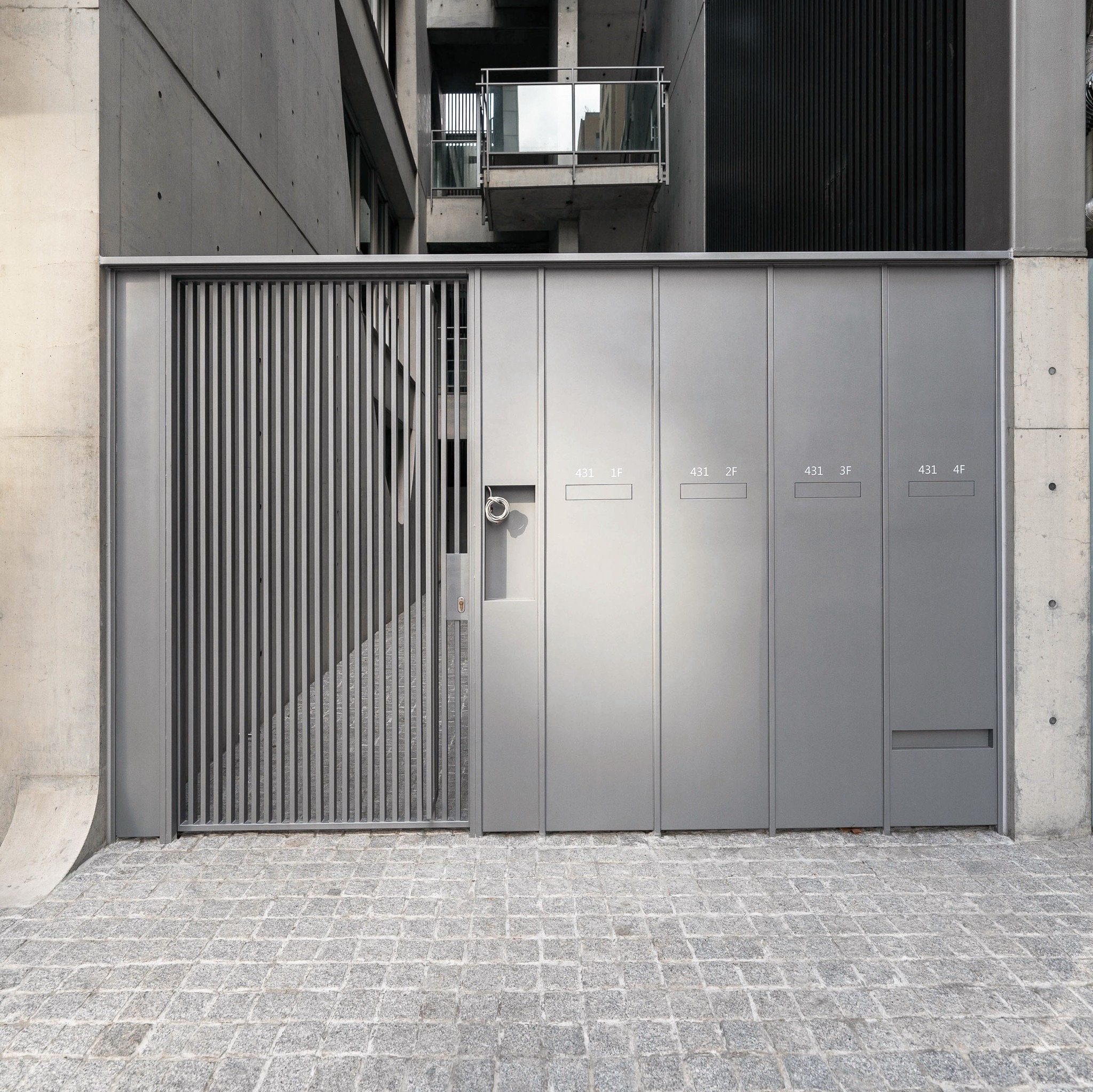
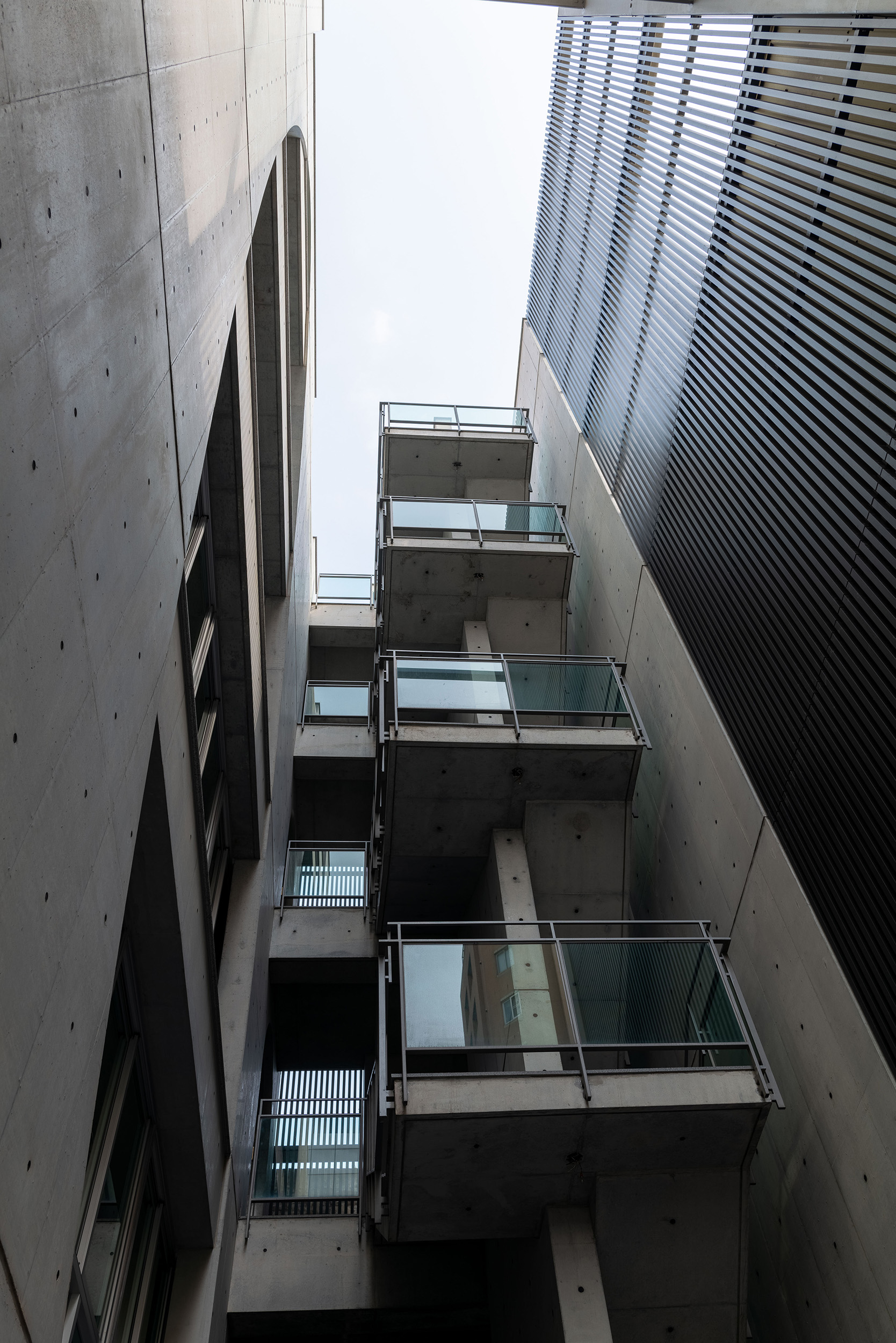
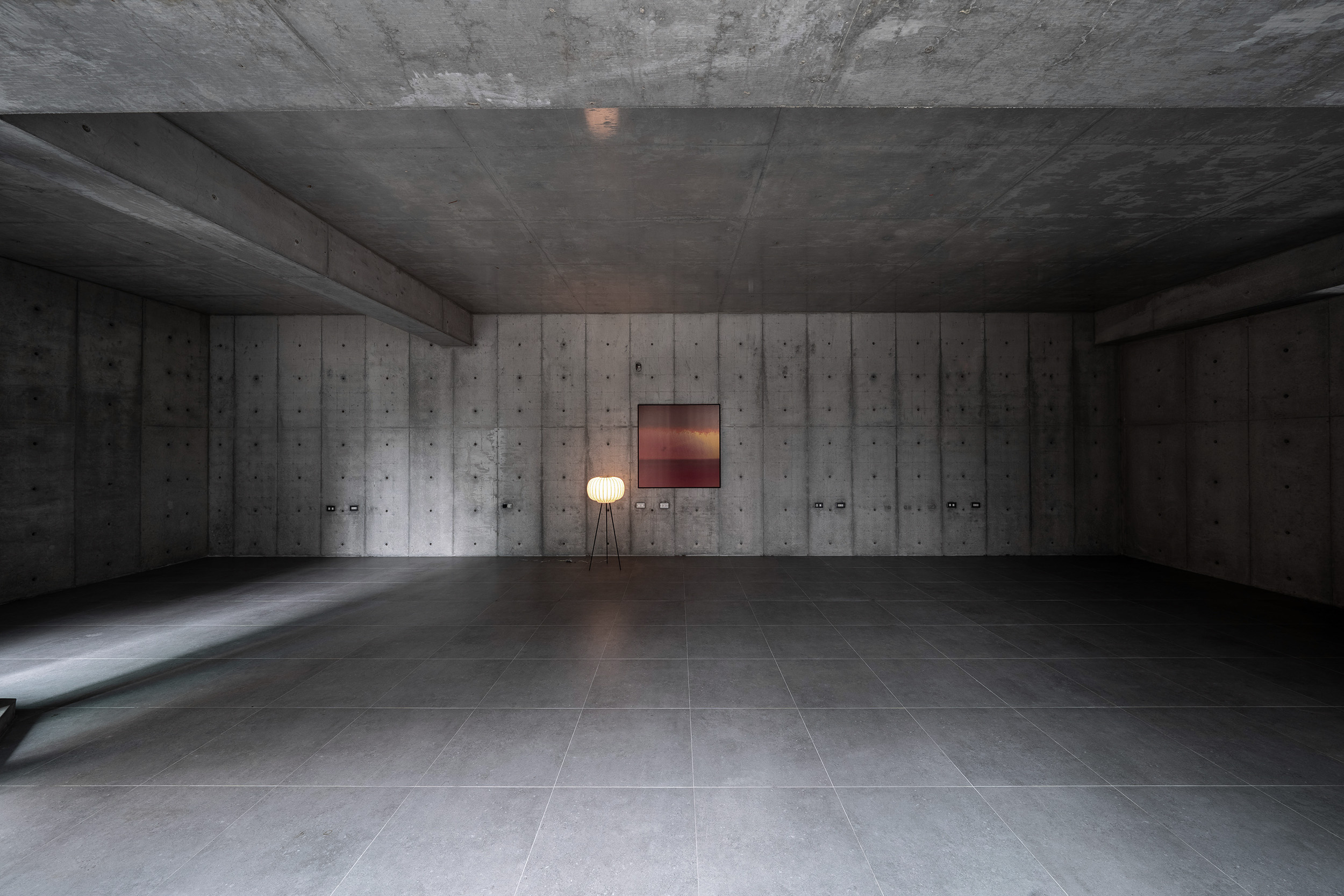
Image Credit : Lee, Kuo-Min
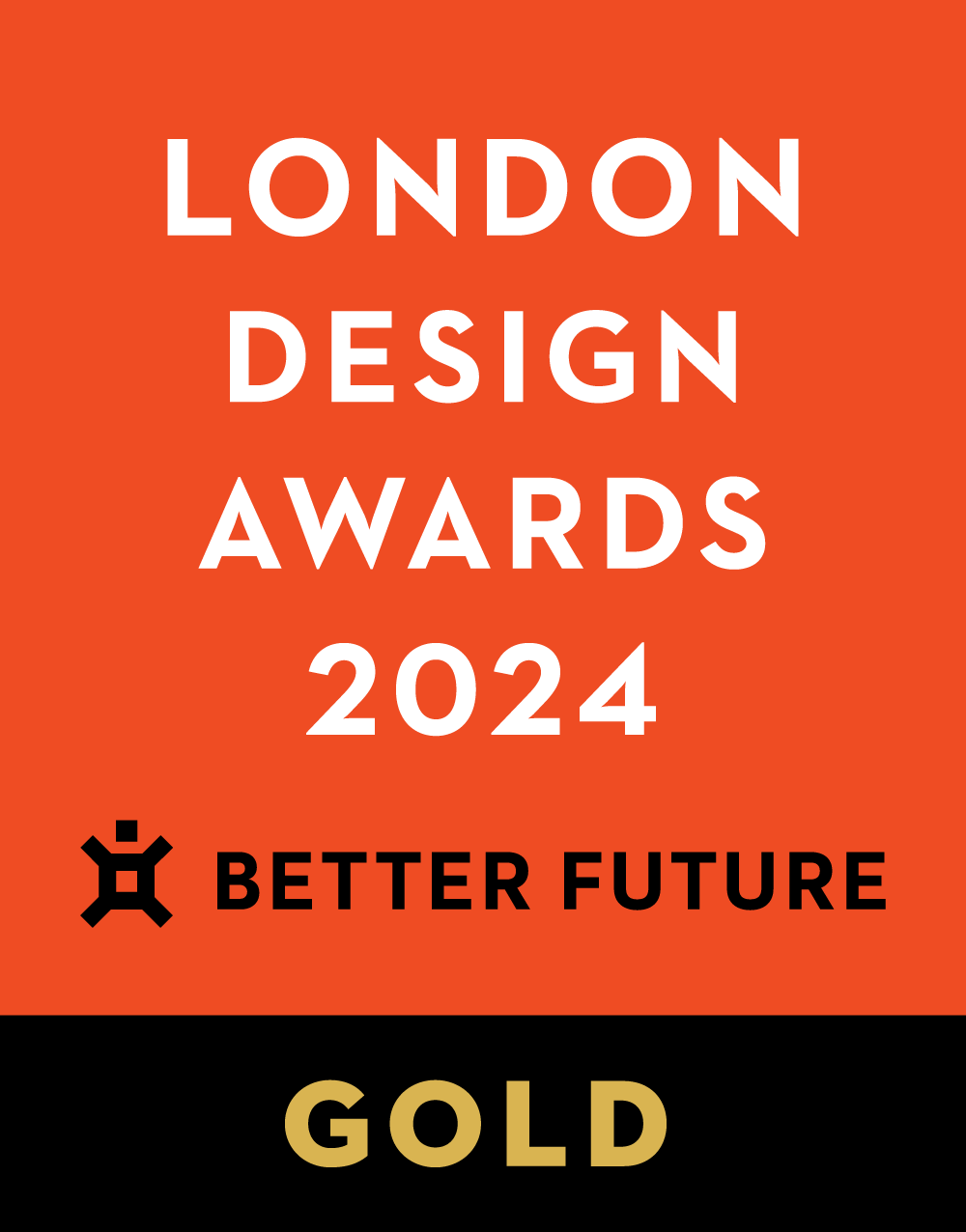
Project Overview
Taichung Yingcai Road was officially handed over to the owner in 2024. The entire project took five years.
The architect uses several round elements as the void space. The volume is designed with two-dimensional arcs and three-dimensional round geometric’ designs. Among them, the concave sphere is the most challenging part of the whole construction process. In this case, the fair-faced concrete subdivision system is adjusted and designed overall using 60cm x 180cm as the basic size, and the elegance of this project is emphasized with the subdivision and the slender site.
According to the function of the commercial space, the designer chooses gray and white granite as the floor pavement. Other materials are followed with the designer’s previous style. The overall design becomes more attractive by the combination of the round elements and the volume.
Project Commissioner
Mao, Shen-Chiang Architecture Studio
Project Creator
Mao, Shen-Chiang Architecture Studio
Team
Architectural Design Mao, Shen-Chiang Architecture Studio
Construction Shih Ao Fair-faced Concrete
Project Brief
This project is located in the shopping area district of Taichung, surrounded by many commercial buildings and green landscape belts. Therefore, as a commercial building in the city center, it can be functionally connected to various areas in Taichung very quickly.
This case is constructed with fair-faced concrete. In terms of design method, the architect used round elements as the architectural technique this time, mainly to balance the rigidity and sharpness brought by the square geometry, and to use smooth elements to reduce the visual impact of this building on people.
The architect designs an exterior staircase on the side of the main building. It is intended to let this staircase be another feature of the overall planning, and the staircase is designed back inside so that outside pedestrians can focus on the main body, and people inside can appreciate the structural beauty presented by this staircase.
There are many important features in this project. First of all, the entrance on the first floor shows the void architectural method to connect and organize the space on the first and second floors. When visitors enter the building, the visual will guide them to enter the space on the second floor, and the other floors correspond to this floor's business space. Secondly, focusing on the materials, the texture of exposed concrete, and various wood materials show the inherent qualities to convey a peaceful feeling for people. Thus, the materials in this project greatly reduce its environmental impact.
Project Innovation/Need
Although this commercial building is small in scale, the construction team challenges the most difficult fabrication. The architect and construction team tried to create the most challenging appearance with geometric elements, and the alternative fabrication planning also reversed the traditional formwork system.
After such a rigorous construction process, Taiwan’s current architectural environment is activated. Based on materials, the raw materials are used to manage the space, reflecting and highlighting the functions endowed by the space itself. This approach also increases the younger generation's sensitivity to space and environment. In addition, this type of building has also created a breakthrough in Taiwan. Many excellent construction teams can reach international standards in Taiwan.
Design Challenge
The biggest challenge in this project is the visual of the void sphere. During the manufacturing process, the architect and construction team repeatedly did multiple tests on the formwork system of the sphere. Finally, it used vertical disassembly to perform formwork subdivision and fabrication.
It is not common to promote buildings completely made from exposed concrete because of the cost. In the past, when the formwork was removed, most wooden boards could not be used because of damage. So, these boards were finally disposed of via incineration. The architect gave up on using traditional formwork, a horizontal six-hole wooden panel (size 90 by 180) and cut the old formwork to be a vertical three-hole wooden panel (size 60 by 180). The advantage is that it decreases the loss rate of the formwork, these boards can also be reused more than two times as well.
Therefore, the percentage of the usage of recycled formwork in this project is above 75%. It also reduces the construction loss rate and construction cost. This change makes buildings made of exposed concrete become viable on a lower budget.
Sustainability
In the past, most residential projects had to rely on many decorative materials, such as paint, tiles, brick, or a large amount of stone. Therefore, this case considers how to reduce the impact on the environment based on the nature of the material and the manufacturing process.
As Adolf Loos once said, " The old love of ornament must be replaced by the love of material itself." So, the architect chose exposed concrete as the main material in this case. The durable property and diversified applications of this material make it widely used in architecture. However, in Taiwan, because of cost, exposed concrete is not easy to be used in general residences. Even if it is used, it is primarily utilized for decorative elements. Hence, architects have tried to improve the production process to reduce costs and increase the popularity of this material in Taiwan.
The material has unique structural properties and inherent green material characteristics, such as reduced reuse of energy, high energy saving, low maintenance requirements and high durability. In addition, most interior elements are made of wood, because wood is a renewable resource, it is considered sustainable. Therefore, this case tends to be a building that can be used for the next generation, unlike many buildings that have a short durability.
Architecture - Commercial - International
This award celebrates the design process and product of planning, designing and constructing form, space and ambience that reflect functional, technical, social, and aesthetic considerations in commercial projects. Consideration given for material selection, technology, light and shadow.
More Details

